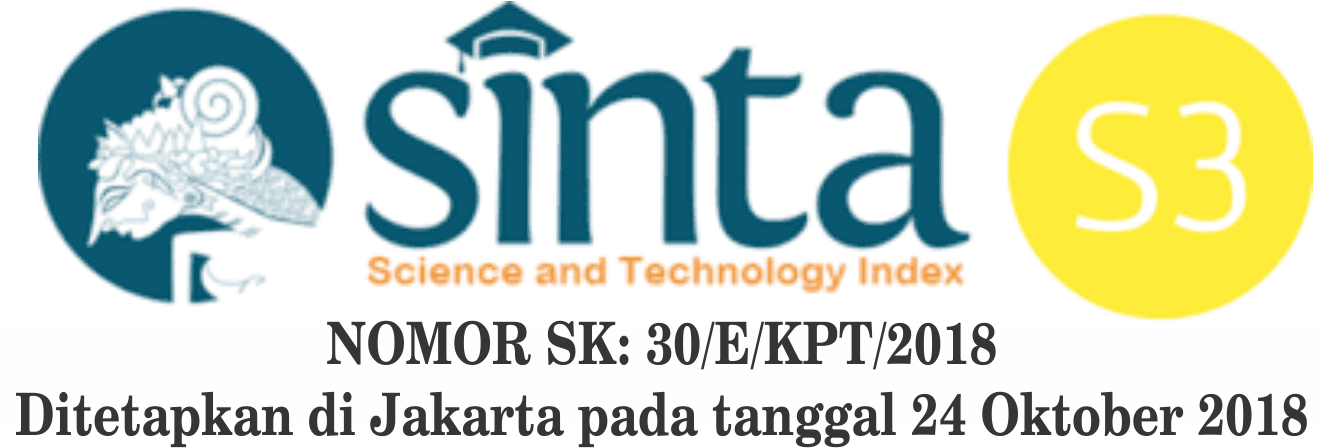Ketidakadilan Budaya Patriarkhi terhadap Perempuan di Nias
Abstract
Keywords
Full Text:
PDFReferences
Azis, A. (2007). Feminisme Profetik, Yogyakarta: Kreasi Wacana.
Beauvoir, S, (1989), Second Sex: Women Life Today, Vintage: New York.
Shih, F.L (2013). Soiologi Agama (terjemahan), Yogyakarta: Pustaka Pelajar.
Daulay, H. (2007). Perempuan dalam Kemelut Gender. Medan: USU Press.
Endah, M, (2012) Budaya Patriarkhi Rugikan Perempuan, https://gudeg.net/read/4202/budaya patriarkhi rugikan-perempuan.html, di akses, 12 Oktober, 2018.
Fakih, M, (2005). Analisis Gender Transformasi Sosial, Yogyakarta: INSIST Press.
Nina, J, (2012). Perempuan Nuaulu Tradisionalisme dan Kultur Patriarkhi, Jakarta: IKAPI.
Girsang, R.F. (2014). Nias dalam Perspektif Gender, Gunungsitoli: Caritas Keuskupan.
Gulo, P, (2015) BÕWÕ dalam Perkawinan adat Õri Moro,õ Nias Barat, Bandung: Unpar Press.
Harefa, B, (2017). Peradilan Adat Nias dan Keadilan Restoratif, UGM Yogyakarta: Jurnal Komunikasi Hukum Universitas, Vol 3, 1, 40-49
Lehman, E.L. (1998). Theory of Point Estimation second Edition. New York: Ithaca.
Lindsey, L.L (1990). Gender Roles: a Sosiological Perspective, New Jesley: Pretitice Hall.
Koentjaraningrat, (1975). Manusia dan Kebudayaan di Indonesia, Jakarta: djambatan.
M. Pis, H. (1993). Sex an Gender: an Introduction, London: Mayfield publishing Company.
McFague, S. (1982). Metaphorical Theology, American: Fortress Pres.
Malau, W. (2014). Pengarusutamaan Gender dalam Program Pembangunan. Jurnal Pendidikan Ilmu-Ilmu Sosial, 6 (2): 125-131
Munthe. H.M, & Hafi. B. (2018). Pemberdayaan Gender Pada Tokoh Adat untuk Mendukung Peran Perempuan dalam Pembangunan Desa. Journal of Education, Humaniora and Social Sciences (JEHSS). 1 (2): 60-65.
Nina, J, (2012). Perempuan Nuaulu Tradisionalisme dan Kultur Patriarkhi, Jakarta: IKAPI.
Patrit, N, (2014). Jurnal Pengaruh Budaya Patriarkhi terhadap Partisipasi Perempuan dalam Pemilihan Legislatif di Nias. Medan: Universitas Sumatera Utara Faculty of Social and Political Science Departement of Political Science. Vol. 4, 2: 72-82
Ndruru, E. (2017). Perempuan Dan Adat Perkawinan (Studi Tentang Marginalisasi Perempuan Dalam Jujuran Adat Istiadat Perkawinan Di Nias), Jurnal Community, Vol. 3, 1, 50-58
Nugroho, R. (2011). Gender Strategis Pengarus Utamaan di Indonesia, Yogyakarta: Pustaka Pelajar.
Ollenburger, J.C. & Helen A.M, (2002). Sosiologi Wanita, Jakarta: Rineka Cipta.
Parsons, T. (1959). The School Class as a Social System, American: Harvard.
Pateman, C, (1988). The Sexual Contract, Work Press.
Puspitawati, H, (2013). Konsep, Teori Dan Analisis Gender (Departemen Ilmu Keluarga dan Konsumen Fakultas Ekologi Manusia- Institut Pertanian Bogor). Bogor: PT IPB Press.
Ritzer, G. (1996) Modern Sosiology Teory, New york: Themcgraw-hin Companies.
Salim, A, (2001) Teori dan Paradigma Penelitian Sosial: dari Denzin Guba dan Penerapannya Yogyakarta: Tiara Wacana.
Syamsuddin, M.M. (2006) Pergeseran Paradigmatik Problem Pikiran-Tubuh Dalam Perdebatan Filosofis, Jurnal Filsafat Vol 16, 291-298
Siregar, H, (1999) Menuju Dunia baru, Jakarta: BPK-Gunung Mulia.
Sonjaya, J.A. (2008). Melacak Batu Menguat Mitos, Yogyakarta: Kanisius.
Suseno, F.M. (2000). Pemikiran KARLMAX, Jakarta: Gramedia.
Sustryani, S.H. (2009). Gender dan Politik, Yogyakarta: Tiara Wacana.
Telambanua, T. & Humel, U. (2002). Salib dan Adu, Jakarta: BPK Gunung Mulia.
Telaumbanua, E.G.N. (2017). Antara “Nias Pulau Impian” dan “Pulau Sejuta Budaya”, https://kabarnias.com/sudut-pandang/opini-warga/antara-nias-pulau-impian-dan-pulau-sejuta-budaya-8374, Diakses: Selasa, 18 Oktober, 2018.
Telaumbanua, A.A. (2006), Bowo Wangowalu (Emas Jujuran dalam perkawinan pada Masyarakat Nias), FISIP USU: Jurnal Kerabat Vol. 1, 16-18.
Turner, B.S. (ed) (2013). Sosiologi Agama, (terj), Yogyakarta: Pustaka Pelajar.
Walby, S, (2014). Teorisasi Patriarkhi (terjemahan), Yogyakarta: Jalasutra.
Wati, R, (2002), Perempuan-perempuan dalam Alkitab, Peran, Partisipasi dan Perjuangan Jakarta: BPK Gunung-Mulia.
Wijaya, K, (2010). Legitimasi Kekuasaan pada budaya Nias, Jakarta: Obor Indonesia.
Yesyca, M, Dkk. (2018). Pemetaan kekerasan antarpribadi terhadap perempuan di Kabupaten Nias tahun 2009-2016, UKI: Jurnal Masyarakat, Kebudayaan dan Politik Vol. 31, 1, 24-35
DOI: https://doi.org/10.24114/jupiis.v11i1.12305
Article Metrics
Abstract view : 1839 timesPDF - 1193 times
DOI (PDF): https://doi.org/10.24114/jupiis.v11i1.12305.g11411
Refbacks
- There are currently no refbacks.
Copyright (c) 2019 JUPIIS: JURNAL PENDIDIKAN ILMU-ILMU SOSIAL

This work is licensed under a Creative Commons Attribution 4.0 International License.
JUPIIS: Jurnal Pendidikan Ilmu-ilmu Sosial

This work is licensed under a Creative Commons Attribution 4.0 International License


